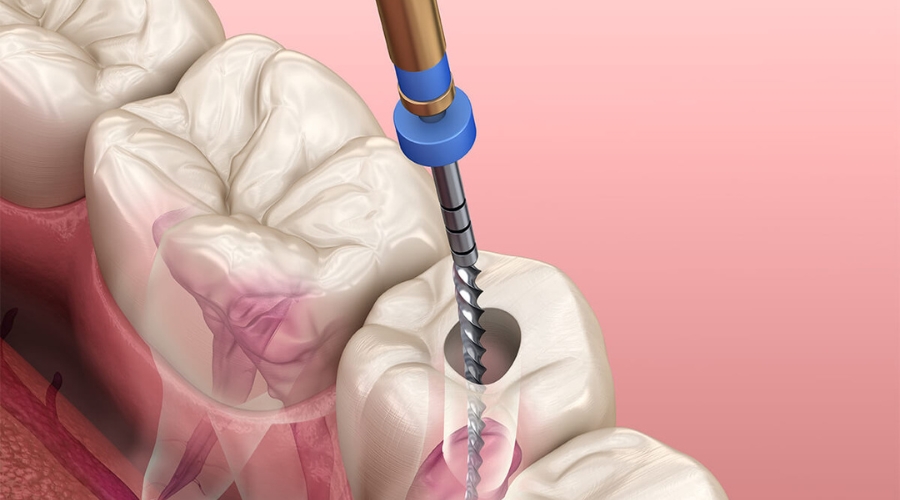7 Common Signs You Need a Root Canal: Everything You Need to Know

When it comes to dental health, understanding when you need professional intervention can save you from a world of pain and complications. One of the most misunderstood procedures is the root canal. Despite its notorious reputation, a root canal is a routine procedure designed to save your tooth from extraction. But how do you know when you might need one? Here are seven common signs that indicate you might need a root canal.
1. Persistent Tooth Pain
Persistent tooth pain is one of the most telling signs that you may need a root canal. This pain can be continuous or intermittent, but it never fully goes away. It might be exacerbated by certain actions, such as chewing or applying pressure. The pain can also vary in intensity, sometimes becoming severe enough to interfere with daily activities.
Tooth pain can originate from several issues, such as cavities, gum disease, or an abscess. However, when the pain is chronic and localized, it often points to an infection or inflammation in the tooth’s pulp. The pulp is the innermost part of the tooth, containing nerves and blood vessels, and when it becomes infected, the pain can be relentless.
2. Sensitivity to Heat and Cold
Tooth sensitivity, particularly to hot and cold temperatures, is another common sign that you might need a root canal. If you feel a sharp, lingering pain when consuming hot coffee or ice cream, it could indicate that the nerves in your tooth are damaged or infected.
This sensitivity occurs because the pulp inside the tooth is damaged and unable to respond to temperature changes properly. Normally, a healthy tooth can manage slight temperature fluctuations without significant discomfort. However, when the pulp is compromised, even slight changes in temperature can trigger intense pain.
3. Discoloration of the Tooth
A tooth that becomes discolored, especially turning dark or grayish, can be a sign of internal damage. Discoloration often occurs because the pulp is dying, which can happen due to trauma or infection. When the pulp dies, the tooth loses its ability to maintain a healthy color, leading to a darkened appearance.
While discoloration can sometimes be caused by external factors such as smoking or consuming staining foods and drinks, internal discoloration is usually a sign that a root canal is needed. If you notice a single tooth becoming discolored, it’s essential to see a dentist for an evaluation.
4. Swollen or Tender Gums
Swollen or tender gums around a specific tooth can indicate that you need a root canal. This swelling is often caused by the presence of infected pulp that has spread to the surrounding tissues. In some cases, you might also notice a small bump or pimple on the gum near the affected tooth, known as a dental abscess.
The swelling can be persistent or fluctuate, and it might be accompanied by tenderness or pain. Gum inflammation should never be ignored, as it can indicate serious underlying issues that require prompt treatment.
5. A Cracked or Chipped Tooth
A cracked or chipped tooth can expose the pulp to bacteria, leading to infection and the need for a root canal. Even if the crack or chip seems minor, it can still provide an entry point for bacteria, allowing them to reach the sensitive inner tissues of the tooth.
If you have sustained a dental injury, it’s important to see your dentist as soon as possible. They can assess the extent of the damage and determine whether a root canal is necessary to prevent further complications.
6. Prolonged Sensitivity to Pressure
If you experience prolonged sensitivity or pain when chewing or applying pressure to a specific tooth, it may be a sign that the pulp inside the tooth is damaged or infected. This type of pain is often sharp and can make eating and speaking uncomfortable.
Sensitivity to pressure can indicate that the nerves in the pulp are inflamed, which is a clear indicator that a root canal might be needed. Addressing this issue promptly can prevent the infection from spreading and causing more severe problems.
7. Deep Decay
Deep decay that reaches the inner pulp of the tooth can necessitate a root canal. When a cavity is left untreated for too long, it can penetrate deeper layers of the tooth, eventually reaching the pulp. At this stage, a simple filling may not be sufficient to repair the damage.
Deep decay often goes unnoticed until it causes significant pain or infection. Regular dental check-ups are crucial for detecting and treating cavities before they progress to this advanced stage. If your dentist discovers deep decay during an examination, they may recommend a root canal to save the tooth.

What to Expect During a Root Canal Procedure
Understanding what happens during a root canal can alleviate some of the anxiety associated with this procedure. Here is a brief overview of what you can expect:
Initial Consultation
During your initial consultation, your dentist or endodontist will take X-rays to assess the extent of the damage and determine if a root canal is necessary. They will also discuss your symptoms and medical history.
Anesthesia
To ensure your comfort, the dentist will administer local anaesthesia to numb the affected tooth and surrounding area. You should not feel any pain during the procedure.
Cleaning the Tooth
The dentist will place a rubber dam around the tooth to keep it dry and free of saliva. They will then make an opening in the crown of the tooth to access the pulp chamber and root canals. Using specialized instruments, the dentist will remove the infected or damaged pulp, clean and disinfect the inside of the tooth, and shape the root canals.
Filling the Canals
Once the canals are thoroughly cleaned and shaped, the dentist will fill them with a biocompatible material, usually gutta-percha. This material helps seal the canals and prevent future infections. The opening in the tooth is then sealed with a temporary or permanent filling.
Restoration
In most cases, a tooth that has undergone a root canal will need a crown to restore its strength and functionality. The crown will be custom-made to fit your tooth and match the color of your surrounding teeth.
Post-Procedure Care
After a root canal, it’s normal to experience some sensitivity or discomfort for a few days. Over-the-counter pain relievers can help manage this discomfort. Your dentist will provide you with detailed aftercare instructions to ensure a smooth recovery.
Follow-Up Visits
Follow-up visits are important to monitor the healing process and ensure the tooth is properly restored. If a temporary filling were used, you would need to return for the placement of a permanent crown.
Recognizing the signs that you need a root canal can help you seek timely treatment and prevent further complications. Persistent tooth pain, sensitivity to temperature, discolouration, swollen gums, a cracked tooth, prolonged pressure sensitivity, and tooth decay are all indicators that you might need this procedure.
A root canal is a common and effective way to save a damaged or infected tooth, and with modern dental techniques, it can be performed with minimal discomfort. If you are experiencing any of these symptoms, don’t hesitate to contact your dentist for an evaluation. Taking prompt action can save your tooth and alleviate your pain, leading to better overall oral health.
Remember, maintaining regular dental check-ups and good oral hygiene practices can help prevent the need for a root canal in the first place. By being proactive about your dental health, you can keep your smile healthy and pain-free.



